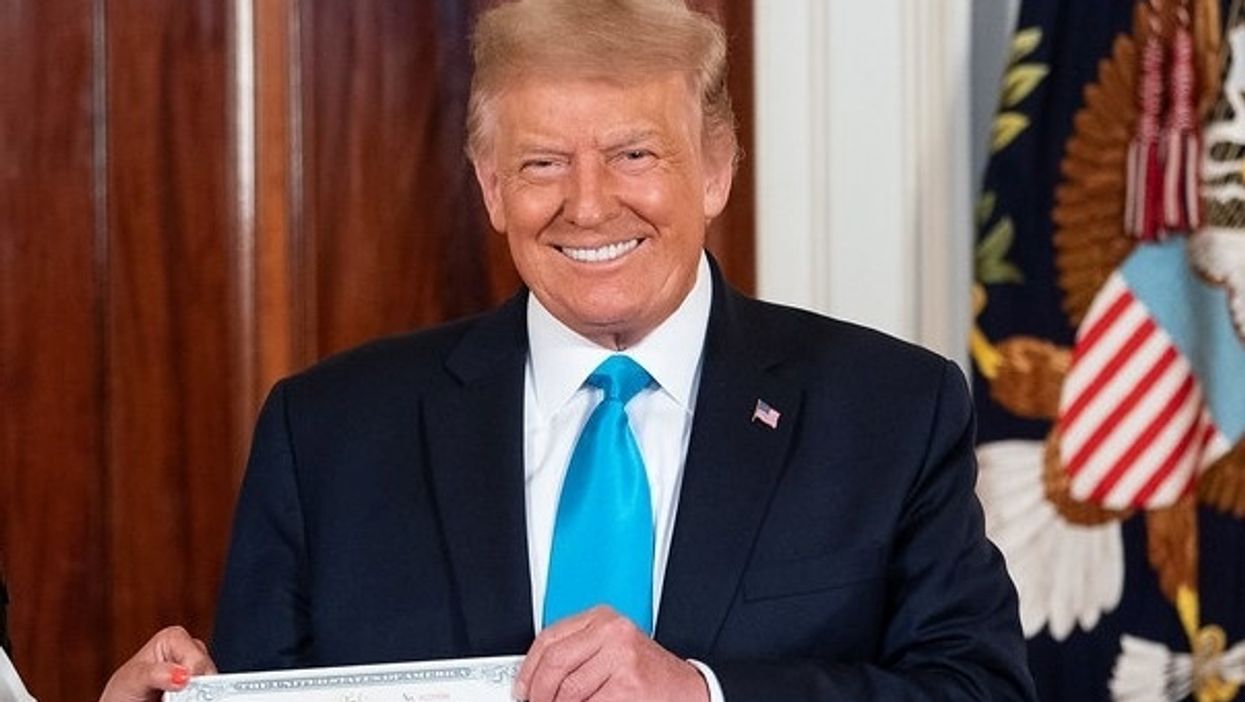Trump Doesn’t Know How To Bring Back Prosperity
Whenever the oil business hits one of its periodic slumps, the joke heard in petroleum-rich areas is: "Please, God, grant me one more boom, and this time I promise not to screw it up." It makes a good bumper sticker, but Donald Trump is using it as a campaign theme.
The middle of a horrendous recession is an odd time to boast about your stewardship of the economy. But it fits with Trump's habit of taking credit for anything that goes right while taking no responsibility for any bad news.
He had planned to run for reelection touting a strong expansion, with nonstop growth and the lowest unemployment rate in 50 years. But that was before the deepest downturn since the Great Depression.
Some 15 million jobs have been lost, and the unemployment rate is above 10 percent. More than a million small businesses have closed — a number that could quadruple by the end of the year. More than 30 million Americans who rent their homes are at risk of eviction in the coming months.
The downturn is largely the product of the coronavirus pandemic, which Trump blames on China, while claiming it would have been far worse except for his wise leadership. Amid the wreckage, he presents himself as our economic savior. "We built the greatest economy in the history of the world," he said last month, "and we're now doing it again."
Wrong on both counts. Economic growth in Trump's first three years averaged just 2.5 percent, up only marginally from the 2.3 percent annual average in Barack Obama's final three years, and well below the performance under George W. Bush, Bill Clinton and Ronald Reagan.
The rapid acceleration in GDP growth that Trump promised never materialized. Job growth slowed after he took office. Trump didn't infused the economy with new vigor. He just kept it going pretty much as it had been.
Nor is there any reason to think his policies will turn the recession into a wondrous new boom. He boasts of unleashing production through deregulation, but it's yielded no visible payoff. His beloved coal mines were shedding jobs even before the pandemic. So was the auto industry.
Trump's trade policies have done more harm than good to American companies — raising costs, disrupting supply chains and creating endless uncertainty. A study last year by Moody's Analytics estimated that his trade wars have cost the United States 300,000 jobs. They have also meant lost sales for American farmers. Farm bankruptcies jumped 20 percent last year.
He has an unwarranted but unshakable belief in the benefits of cutting taxes. His 2017 tax plan added an estimated $1.8 trillion in deficits over 10 years but had only a modest effect on output. Trump's temporary cut in payroll taxes finds little support among economists, who say it will slash revenue without stimulating hiring.
His $300-a-week supplement to unemployment insurance, financed with federal disaster funds, will run out after four or five weeks. And it's far less than what was going out before to those who have lost jobs.
The Federal Reserve has done all it can to support the economy by keeping interest rates near zero and greatly expanding its loans. But the urgent priority is for Congress to put money into the hands of Americans who are unemployed and businesses that are in danger of going under forever.
The $2.2 trillion relief package enacted in March did an immense amount of good by sparing millions of people from financial hardship and putting money into the economy. Credit card debt and delinquencies, which normally rise during hard times, fell in the second quarter. Consumer spending rose in both May and June.
This kept the economy from total collapse. Had consumer spending plunged and renters been unable to pay their rent, more businesses would have closed and more jobs would have been lost. That, in turn, would have pushed the economy into an ever-deepening death spiral.
House Democrats have tried to avert that prospect by approving $3.5 trillion in additional funds for individuals, unemployed workers, small businesses and state and local governments. But Trump and Senate Republicans have decided that the worst economic crisis in nearly a century is the perfect moment to embrace the fiscal restraint they previously spurned. It's a perfect way to prolong the agony.
Trump took all the credit for an economic expansion that began under his predecessor. But he didn't know how to keep it going, and he doesn't know how to bring it back.
Steve Chapman blogs at http://www.chicagotribune.com/news/opinion/chapman. Follow him on Twitter @SteveChapman13 or at https://www.facebook.com/stevechapman13. To find out more about Steve Chapman and read features by other Creators Syndicate writers and cartoonists, visit the Creators Syndicate website at www.creators.com.



